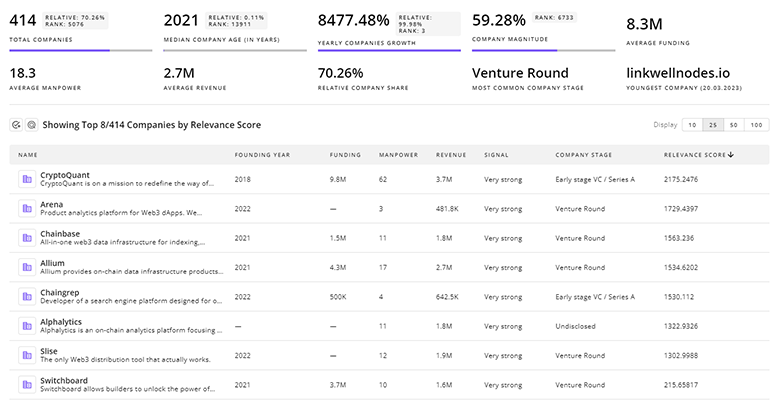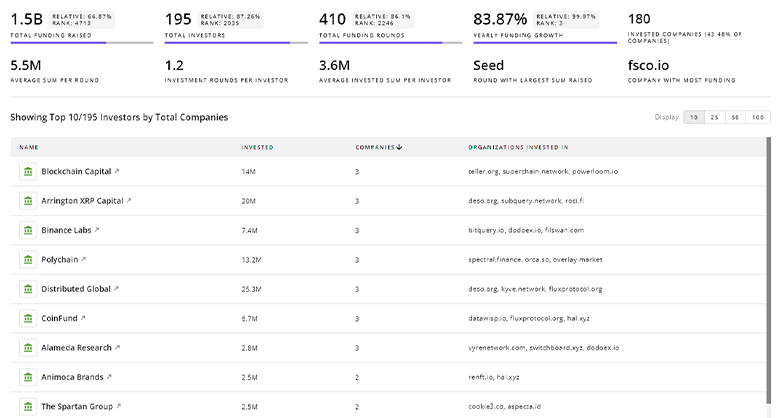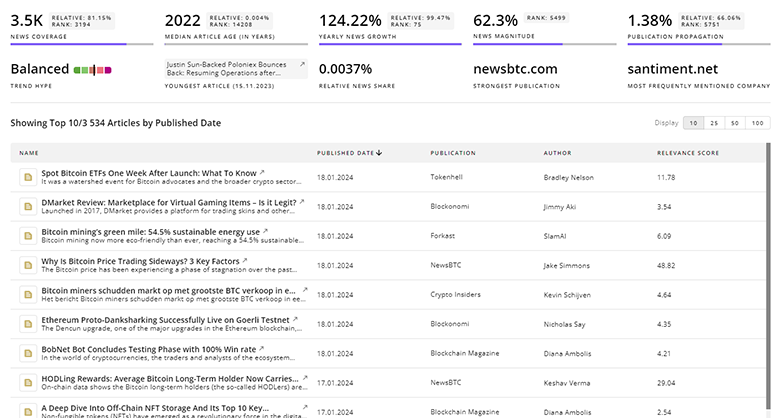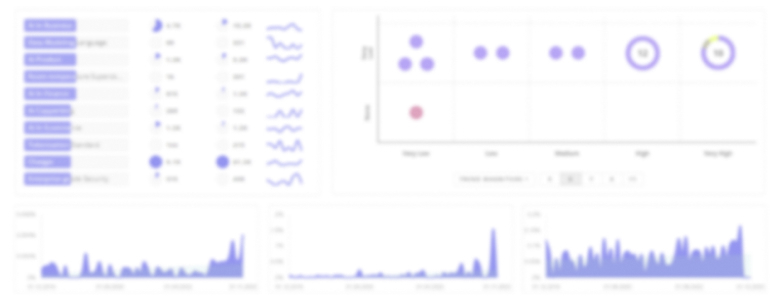
Q-commerce Report
: Analysis on the Market, Trends, and TechnologiesThe Q‑commerce segment is witnessing a rapid rise driven by heightened consumer demand for near‑instant deliveries, significant investment inflows, and exponentially increasing media attention—a combination that is reshaping retail logistics and omnichannel operations (Q‑Commerce: The New Front of Competition?).
This report was last revised 190 days ago. See a missing piece? Your input can help — contact us.
Topic Dominance Index of Q-commerce
The Dominance Index for Q-commerce delivers a multidimensional view by integrating data from three key viewpoints: published articles, companies founded, and global search trends
Key Activities and Applications
- Rapid Order Processing and Fulfillment:
Q‑commerce companies focus on super‑fast delivery models by streamlining order placement and coordinating real‑time inventory across multiple channels. This includes dynamic order management systems that integrate data from dark stores and micro‑fulfillment centers to ensure delivery within minutes (What is q‑commerce?). - Integrated Omnichannel Platforms:
Enterprises employ cloud‑based, omnichannel platforms that allow seamless coordination between online channels and physical fulfillment centers. These systems incorporate unified point-of‑sale (POS), order management, and payment solutions to provide consistent customer experiences (Q‑Commerce: The Next Gen Model of E-commerce). - Investment in Enhanced Logistics Networks:
Businesses are investing in advanced logistics infrastructure—involving dark stores, smart routing, and real‑time tracking technology—to support the quick turnaround of orders. This is evidenced by the considerable funding within the segment, which has reached approximately $22.2 billion across 522 companies, with an average revenue per company of about $28.1 million. - Industry-Specific Applications:
Several sectors, including fast fashion, grocery, and lifestyle products, are adopting Q‑commerce models to meet the need for immediacy.
Emergent Trends and Core Insights
- Explosive Growth in Media and Market Interest:
Media coverage of Q‑commerce has surged dramatically, with reports from multiple sources highlighting its evolution as a new competitive front in retail (Quick Commerce: An Ever‑Changing E‑Commerce Prospect). This rising prominence is paralleled by a rapid annual growth rate in new company entries and articles, even as overall company maturity remains in an early stage. - Concentration of Investment and Innovation:
The segment is backed by considerable capital, as evidenced by an average funding per round of around $71.1 million. This strong investment activity is driving continuous innovations in supply chain and logistics technologies that are critical to meeting consumer expectations for rapid delivery. - Integration of Technology with Logistics:
Q‑commerce is increasingly blending digital technologies with traditional logistics. Advanced analytics, real‑time data integration and automated routing are becoming standard, enabling businesses to optimize order fulfillment in environments where speed is critical. - Sector Divergence and Emerging Niches:
While many companies continue to enter the Q‑commerce market, a noticeable challenge is the relatively low company maturity signal, suggesting that although interest is high, many players are still in the nascent stage of development. This could lead to market consolidation in the future as mature platforms outcompete early stage entrants.
Technologies and Methodologies
- Cloud‑Based and API‑First Platforms:
Modern Q‑commerce platforms are built on cloud infrastructure with API‑first designs, facilitating seamless integration with various back‑end systems such as ERP, CRM, and OMS. This allows for real‑time data synchronization and dynamic inventory management. - Micro‑Fulfillment Centers and Dark Stores:
To meet the demand for near‑instant delivery, companies are establishing micro‑fulfillment centers and connecting with dark store networks. These centers improve the efficiency and speed of order processing by localizing inventory and reducing transit times. - Advanced Logistics and Real‑Time Tracking:
Integrated logistics systems deploy advanced routing algorithms, real‑time tracking technologies, and smart analytics to optimize last‑mile delivery. Such systems enable businesses to predict demand patterns and automate delivery routes for faster order fulfillment. - Data‑Driven Decision Making:
The use of analytics platforms to correlate customer behavior with operational performance is critical. Businesses utilize real‑time dashboards and predictive analytics to adjust inventory, manage stock levels, and optimize delivery schedules.
Q-commerce Funding
A total of 125 Q-commerce companies have received funding.
Overall, Q-commerce companies have raised $22.2B.
Companies within the Q-commerce domain have secured capital from 623 funding rounds.
The chart shows the funding trendline of Q-commerce companies over the last 5 years
Q-commerce Companies
TrendFeedr's Companies feature is your gateway to 527 Q-commerce companies.

527 Q-commerce Companies
Discover Q-commerce Companies, their Funding, Manpower, Revenues, Stages, and much more
Q-commerce Investors
The Investors tool by TrendFeedr offers a detailed perspective on 1.0K Q-commerce investors and their funding activities. Utilize this tool to dissect investment patterns and gain actionable insights into the financial landscape of Q-commerce.

1.0K Q-commerce Investors
Discover Q-commerce Investors, Funding Rounds, Invested Amounts, and Funding Growth
Q-commerce News
TrendFeedr’s News feature allows you to access 3.6K Q-commerce articles as well as a detailed look at both historical trends and current market dynamics. This tool is essential for professionals seeking to stay ahead in a rapidly changing environment.

3.6K Q-commerce News Articles
Discover Latest Q-commerce Articles, News Magnitude, Publication Propagation, Yearly Growth, and Strongest Publications
Executive Summary
Q‑commerce is rapidly redefining the landscape of retail by merging digital innovation with advanced logistics and real‑time fulfillment strategies. The sector’s strong investment profile, significant media attention, and emerging technological capabilities suggest that while many players are still in the early stages, competitive consolidation and continued innovation will shape its future trajectory. Retailers and investors alike should closely monitor these developments to remain adept in meeting the evolving expectations of time‑sensitive consumers.
Partner with us to offer cutting-edge insights into trends and tech. We welcome your input.










